MUSHROOM HUNTING
Whenever I think of mushrooms, I think of the little old Italian woman who picked the wild ones growing in the front yard of our house in suburban New Jersey. She would always knock on our front door and ask permission. The first time, my mother hesitated, not knowing if they were poisonous. “No! They are good, very good, “ she responded, or at least that’s how we interpreted her enthusiastic gesticulations.
When the little lady dressed in black came back the second time, we figured she knew what she was talking about, but being used to buying, rather than harvesting our food, we left the mushrooms for her. The funny thing is that we never saw her walking down the street. We didn’t know where she lived. She just seemed to appear when there were mushrooms, as if she somehow knew when and where they were going to sprout. Then one year, she stopped showing up and there wasn’t anyone to replace her.
CALABRIAN MUSHROOMS
In Calabria, mushrooms are popular. Thanks to its diverse landscape and variety of vegetation, the region hosts an exceptionally wide assortment. From the mountains to their foothills that run the length of the territory, the precious commodity is picked for both private consumption and commercial enterprise.
Naturally, mushrooms feature prominently in Calabrian cuisine, and businesses capitalize on their popularity as a regional specialty. Prepared in every conceivable manner, shops present them in jars and bags: whole, chopped, dried, in oil, frozen, a single type or mixed, combined with vegetables, spiced, as a pâté, a topping for bruschetta or a pasta sauce.
Many restaurants highlight the mushroom, particularly in the mountains. Driving to a restaurant or agriturismo with the scope of eating mushrooms can be the focus of a day’s outing. And if you stumble into a place that is featuring fresh mushrooms, you order them unless you have an allergy or you really don’t like them. You can always have a plate of pasta with tomato sauce, but mushrooms are something special and are recognized as such. How could we have let them languish in our front yard?
MARCOVALDO
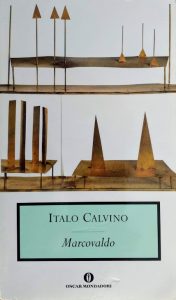 Living in cities and buying all of our groceries from supermarkets, we’ve lost a connection with nature. It can even happen in Italy. Already back in the early 1960s, writer Italo Calvino showed how man’s relationship with nature could be affected by city life in his brilliant collection of short stories entitled Marcovaldo ovvero Le stagioni in città (Marcovaldo or The Seasons in the City). Marcovaldo, a poor man from the country living in a northern industrial city, is the protagonist in the work’s twenty brief tales, each associated with a season of the year.
Living in cities and buying all of our groceries from supermarkets, we’ve lost a connection with nature. It can even happen in Italy. Already back in the early 1960s, writer Italo Calvino showed how man’s relationship with nature could be affected by city life in his brilliant collection of short stories entitled Marcovaldo ovvero Le stagioni in città (Marcovaldo or The Seasons in the City). Marcovaldo, a poor man from the country living in a northern industrial city, is the protagonist in the work’s twenty brief tales, each associated with a season of the year.
The first story recounts Marcovaldo’s discovery of a budding mushroom patch in a strip of greenery along a city street. Thinking he has found a little piece of nature in the middle of the city, he quietly watches over it, hoping no one else notices so he can reap the entire harvest for himself and his family. However, when the moment comes to pick the mushrooms, he finds he’s not alone. Although he isn’t able to gather as many as he hoped, his family enjoys an abundant meal nonetheless.
The episode ends with the rival mushroom pickers meeting up at the hospital. The mushrooms were poisonous. Their fate was precisely that which we had feared with the mushrooms in our front yard.
MUSHROOM DISHES

ANTIPASTI (PANINOTECA TRATTORIA, GAMBARIE)
Sitting down to a plate of mushrooms or a dish of pasta with mushrooms in a restaurant is not only less risky but highly likely to be downright tasty. Appetizers frequently feature funghi sott’olio (mushrooms under oil) even in places that aren’t particularly known for the mushroom. Along with vegetables, they have historically been preserved in olive oil, and today routinely grace appetizer tables with local cheeses and salami. In season, a delicate mushroom, freshly picked, may also be served with olive oil.

Antipasti (Serra San Bruno)
Other mushroom antipasti include grilled, fried, and sweet and sour. For my tastes, the agrodolce (sweet and sour) is too strong a taste for the mushroom as it can overpower its subtle flavor.

Funghi in agrodolce
Fried mushrooms, however, are heavenly.

Funghi fritti
The most common presentation for the first course is tagliatelle ai funghi – long, flat pasta with a mushroom sauce. I’ve enjoyed this dish in many an establishment, most often with porcini mushrooms. The preparations have been similar – balancing the fresh, egg pasta with the earthy mushroom. The plate’s simplicity allows the flavor of the mushroom to shine. (Click on photos to enlarge.)
- Tagliatelle ai funghi, Paninoteca Trattoria, Gambarie
- Tagliatelle ai funghi, Serra San Bruno
- Tagliatelle ai funghi Il Bucaneve, Gambarie
AT HOME
I’m not a mushroom expert. If I were, the little old Italian lady would have had to look elsewhere. My people have been away from the country for too long, even longer than Marcovaldo. I must admit, however, that seeing baskets of mushrooms, freshly plucked, ready to be cleaned and cooked, does inspire their consumption – so different from the little button and crimini mushrooms smothered in plastic wrap at the supermarket. The mushroom surrounded by earth tastes, well, earthy. The mushroom surrounded by plastic wrap tastes…

Mushrooms of Serra San Bruno
Interested in Italian culture? Read more about life in southern Italy in Calabria: The Other Italy, my award-winning, nonfiction book that explores daily life, culture, history, the arts, food, society and tourism of Calabria, Italy.
Experience a Mushroom Festival in the blogpost Mammola and Mushrooms.
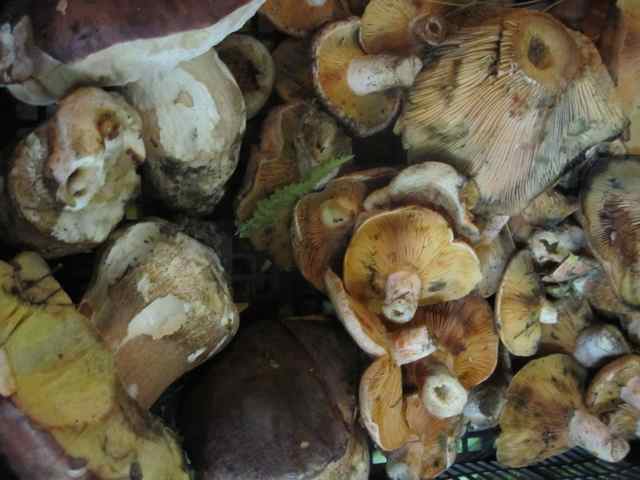
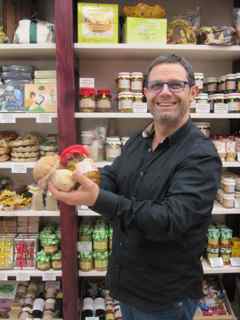

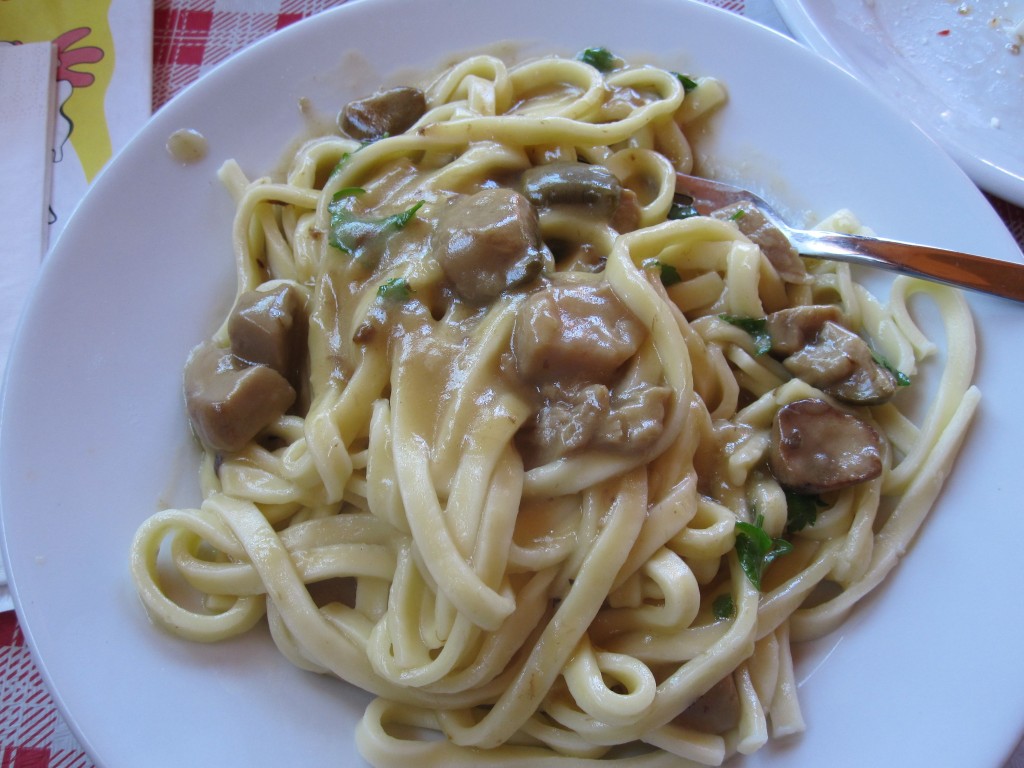
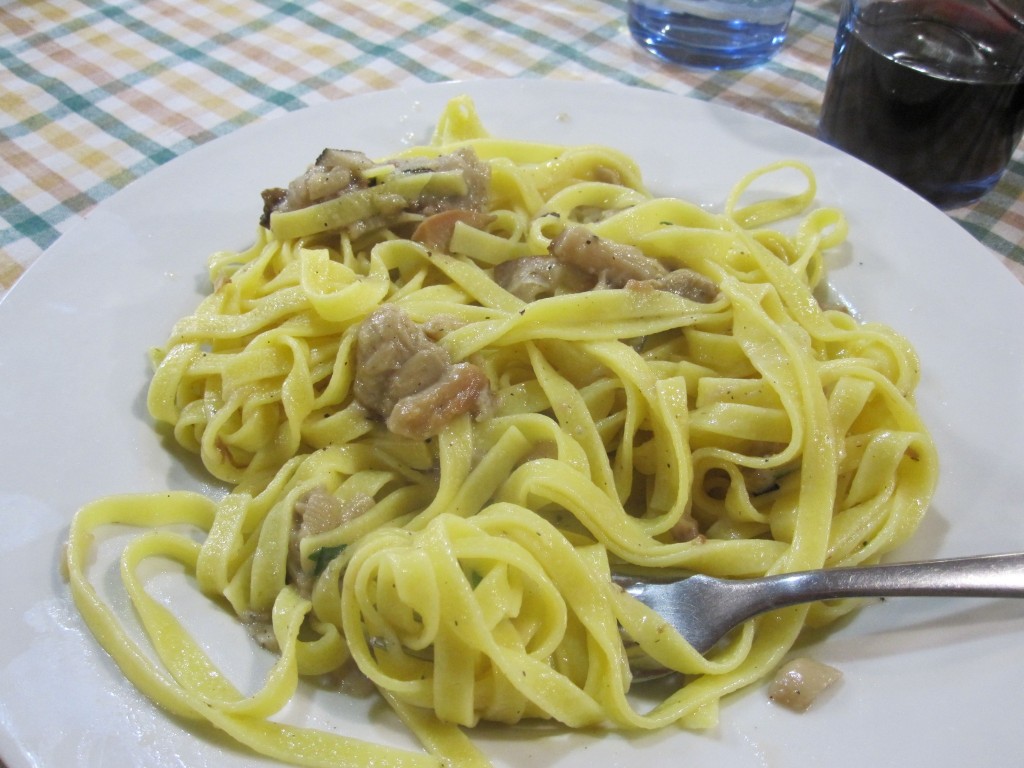
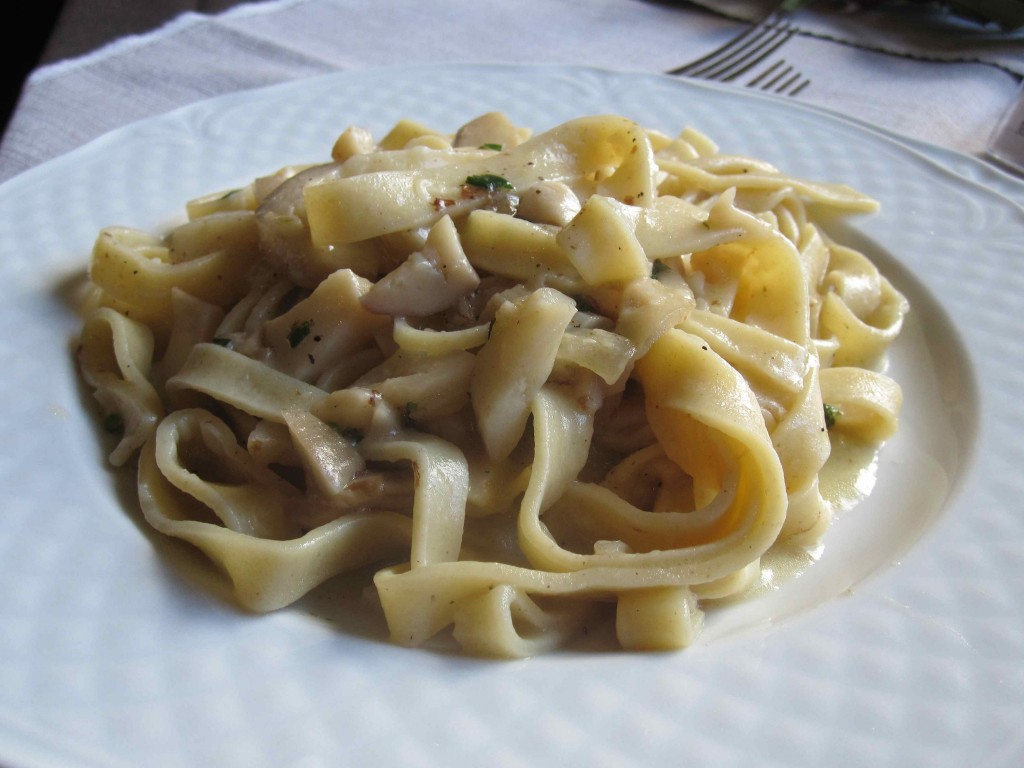

Comments 5
Wow! I’ll take them, grilled, sauteed or straight up from mother earth. Choices in Italy sure make shopping in the USA look sparse. Can these be found in Vegas? Enjoyed the entire post.
Author
Thanks. The pictures of the freshly picked mushrooms were taken in restaurants that had just received deliveries.
A mushroom lovers delight–enjoyed the coverage!—-Read by two!
Finally found the site ……… it was well worth it! The fresh mushrooms AND the prepared dishes are all lovely! Recipes????
Author
Thanks! Well, that’s the nice thing about restaurants. You eat what you’re served and you don’t have to worry yourself with the particulars as to how each dish was prepared. I would, however, like to try frying up some mushrooms sometime soon.